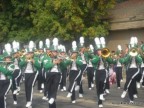A History Story for July: The USS Lucid

This is the season when our patriotic blood seems to flow the strongest and we seem to pay more attention to memorials dedicated to fallen patriots. Since we celebrate the birth of our Nation in July, we often reminisce about wars and conflicts, how and where those patriots served. I’ve been thinking about ships.



















